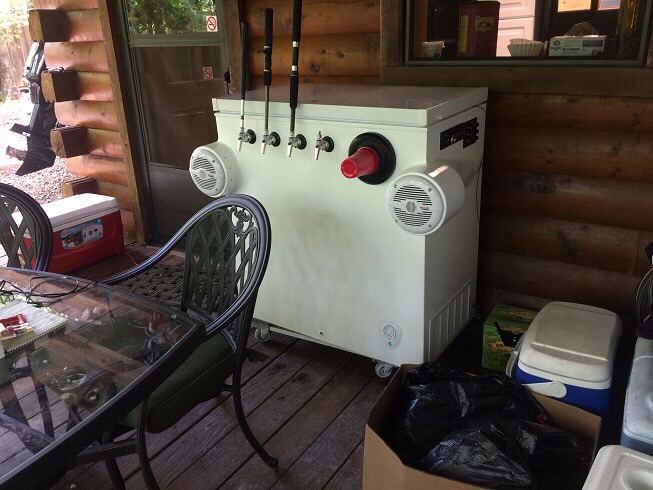I'm looking to build a jockey ideally for use during the summer camping season. I can get ice, but I'll likely be in a warm climate (ie: the keg itself won't be chilled). I'd also like to make use of existing 50'-1/2 stainless tubing I have from an immersion chiller.
I've balanced a CO2 system before, there are enough calculators online to help a guy out, but in this case, I'm dealing with two different temperatures. It also seems to hurt me that the resistance provided by the entire bit of stainless tubing amounts to about 1.25 psi. And most likely the tap head is only going to be at most 2 feet above the top of the keg.
So lets say I can keep the keg at 65F, because that's the end of the table (http://www.kegerators.com/carbonation-table.php), and want 2.25vols. That would leave me with a pressure on the keg of about 23psi. So, if I don't want my beer to jet out and foam all over the place, how do I handle pressure reduction along with the coil's temperature reduction? I'd like to have a 10-12s/pint pour; I'll be even happier if it is slower as long as it produces a good head.
The real question, I guess, is where to put the choker and at what temperature?
If I have a 3/16 or 1/4 ID beverage line going to the jockey box that is long enough to drop the pressure, won't the temperature drop inside further reduce the pressure and result in flat beer? Is there a 'good' level to drop the pressure outside the box? If I run at the higher pressure into the box and coil, and put a reducing line between the coil and the tap, how long should it be (ie: what temperature and pressure do I use?).
Right now the only plan I have is to experiment with different setups. That seems like a waste of time _and_ beer, so I'd rather not do that. I figure that I'm not that unique, someone else has to have dealt with this before, so what is the best way to handle it?
I've balanced a CO2 system before, there are enough calculators online to help a guy out, but in this case, I'm dealing with two different temperatures. It also seems to hurt me that the resistance provided by the entire bit of stainless tubing amounts to about 1.25 psi. And most likely the tap head is only going to be at most 2 feet above the top of the keg.
So lets say I can keep the keg at 65F, because that's the end of the table (http://www.kegerators.com/carbonation-table.php), and want 2.25vols. That would leave me with a pressure on the keg of about 23psi. So, if I don't want my beer to jet out and foam all over the place, how do I handle pressure reduction along with the coil's temperature reduction? I'd like to have a 10-12s/pint pour; I'll be even happier if it is slower as long as it produces a good head.
The real question, I guess, is where to put the choker and at what temperature?
If I have a 3/16 or 1/4 ID beverage line going to the jockey box that is long enough to drop the pressure, won't the temperature drop inside further reduce the pressure and result in flat beer? Is there a 'good' level to drop the pressure outside the box? If I run at the higher pressure into the box and coil, and put a reducing line between the coil and the tap, how long should it be (ie: what temperature and pressure do I use?).
Right now the only plan I have is to experiment with different setups. That seems like a waste of time _and_ beer, so I'd rather not do that. I figure that I'm not that unique, someone else has to have dealt with this before, so what is the best way to handle it?




